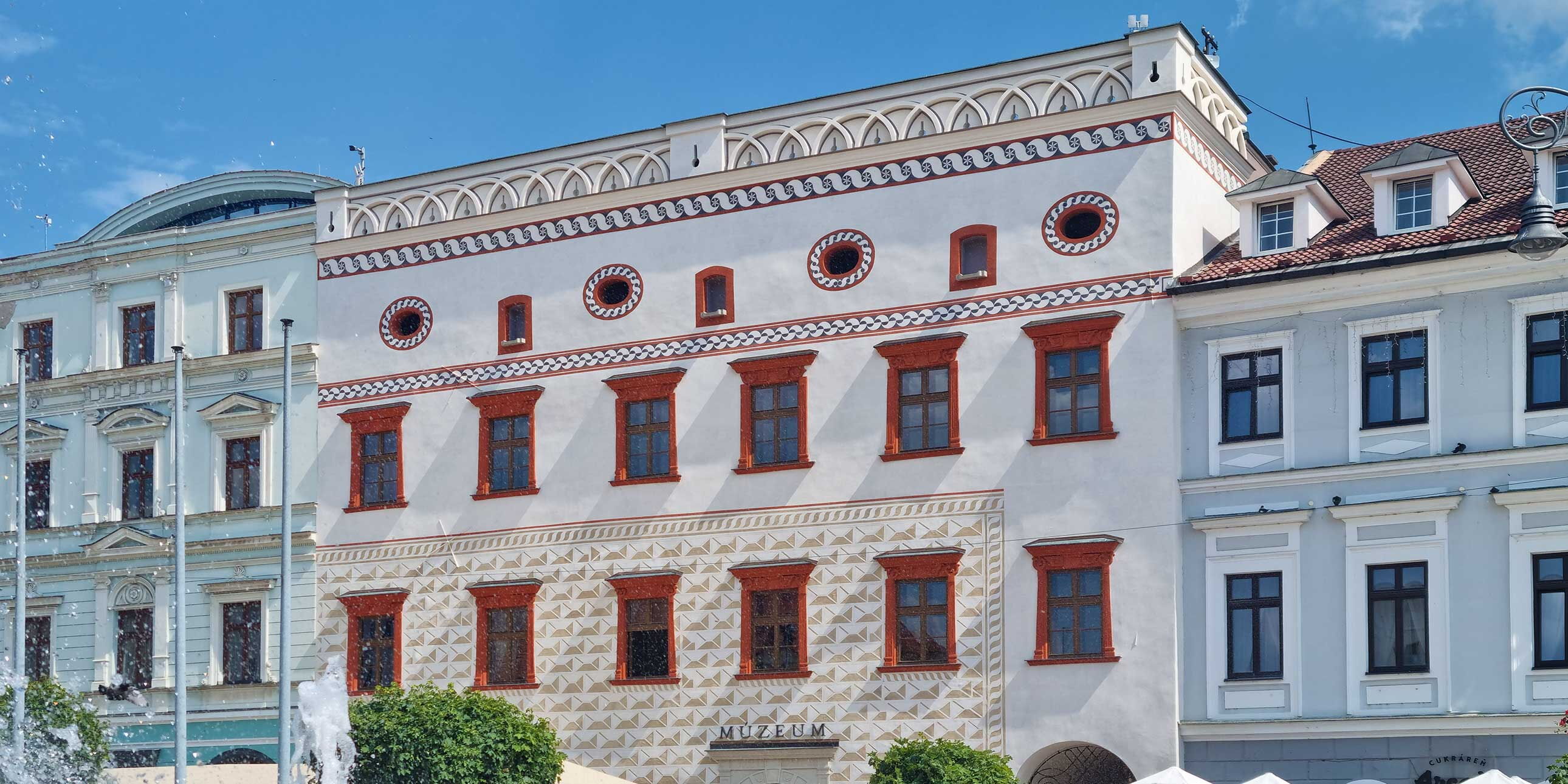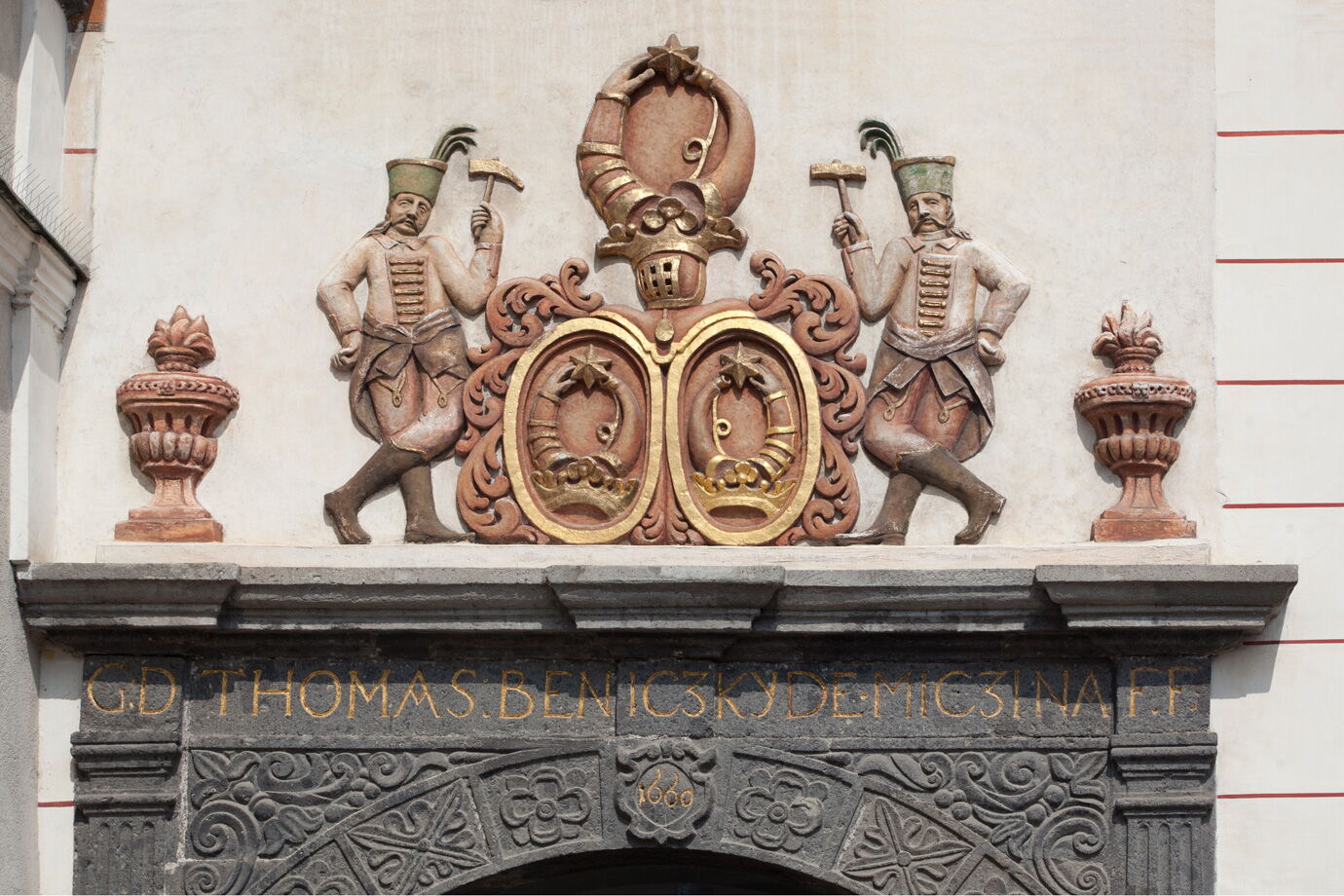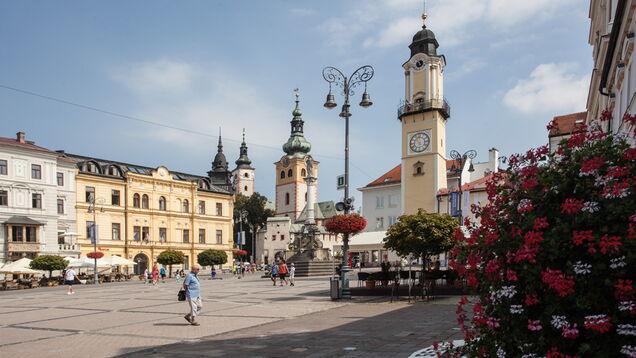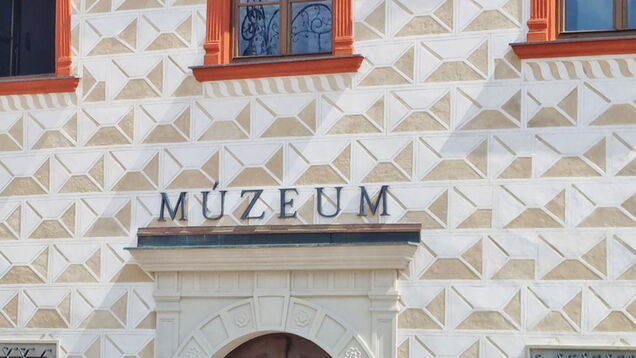
The rise of the Fugger mining corporation began in Neusohl
The Fuggers Earned an Enormous Fortune with the Copper Ore out of Neusohl
A saying from the middle ages says: “Golden Augsburg rests on ‘coppery’ Neusohl”. The rise of the Fugger’s copper empire began in 1494 with the help of a mining engineer from Krakow, Johannes Thurzo, in the heart of modern day central Slovakia, in Banská Bystrica (Neusohl). Thurzo brought with him his contacts with the Hungarian royal court, technical knowledge and an innovative vertical mining technique into the process of mining the silver-containing copper ore. The Fuggers brought their considerable capital. The copper trade, which was dominated by the mining companies of the Fuggers in Europe, made both families rich. The Fuggers were the leading mining company in Neusohl from 1496 until 1546, the Thurzo family left the corporation in 1526.
Tip
The Thurzo House, a monument from the Fugger era in Neusohl (Banská Bystrica), which is named after the business partners of the Fuggers, is located on the “Plaza of the Slovakian National Resistance” (Nàmestie SNP). Most of the places of interest are grouped around this area. The city fortress, the gothic Assumption of Mary church and the Mathias house are on the northeastern edge of this plaza. Neusohl’s trade mark is the leaning clock tower built in 1552.

Copper and silver from Neusohl were the basis for the legendary wealth of the Fuggers and therefore also for their political importance. The total profits of the Hungarian trade with these metals between 1496 and 1546 is estimated to be several million Florins - an unimaginably high amount. Around 700 tons of copper was produced, transported and sold through Antwerp, Amsterdam, and also via Venice and Nuremberg. 120 Tons of this copper segregated silver was delivered the local coin minting workshop in Kremnitz, but also to Nuremberg and to Venice. The copper from upper Hungary had a market share of 40% in the European copper markets in the years following 1500. Only in the alpine region - primarily in the Fugger’s ore mines in Schwaz and near Kitzbühel - was the production a bit higher. The mining companies of the Fuggers were thus able to dominate the booming copper market of the early 16th century. Enormous debt in the Hungarian royal court resulted in the mining areas and the Castle Altsohl being turned over to the Fugger-Thurzo-Corporation in mortgage ownership.

The Thurzo House in Neusohl is a Reminder of the Fugger’s Hungarian Trade
In 1526 the Thurzo’s handed over their shares in the Hungarian trade to the Fuggers, who then continued the mining and segregation of metals in and around Neusohl for another 20 years. But the location of the Hungarian trading offices of the Fugger-Thurzo-corporation is still named after the Thurzo family. Johannes Thurzo bought this Renaissance building with a sgrafitto facade in 1495 for the company. The four story Thurzo house is home to the so-called “Green Hall.” The barrel vaults are painted with frescos from around 1480. Next to the weapons of the Hungarian Kings from the house of Anjou and Corvinus, there are visible floral motives, biblical scenes and depictions from Aesops fables. Also recognizable are depictions of Saint Daniel as the biblical discoverer of ore and patron saint of the miners. There are miners with hammer and chisel at a mine entrance which depict the nearby mines in Neusohl. The cycle of frescos also depict Saint Barbara, the guardian saint of the miners, and Saint Georg, who was known as the protector of Rammelsberg near Goslar. (Thurzo was an owner there beginning in the year 1478). Saint Eustace is also depicted. He is the patron saint for foresters and helpers to protect against the destruction of nature. (Wood was imperative for the pit props in the mines and for the ovens in the smelting mills) So, there are four frescos in the “Green Hall” which depict saints related to the international mining operations which were once here in the region.

Traces of the Fugger Corporation and Mining: The Lauginger House and Baroque Miners
According to recent research, three houses located directly on the central market place belonged to the Fugger-Thurzo-Corporation. The ring of houses belonging to the mine owners in Neusohl formed a group there. The Thurzo-House was the so-called middle house. The upper house was renovated in the Baroque style: it is still named after the Augsburg patrician’s daughter Veronika Lauginger, who married Ulrich Fugger (the oldest brother of Jakob Fugger “the Rich”) in 1479 – Lauginger House (Laugingerov dom). At least one of Veronika’s brothers, who worked for the Fuggers, appears to have been employed in the mining company in Neusohl. The lower house was torn down. The church of Elisabeth in Neusohl is also a reminder of the Fuggers. They financed the rebuilding of a small sacred structure in 1524 after a fire had destroyed the church. The Fuggers then took over the rights of patronage from the Thurzo family. Today the church houses a Greek orthodox congregation.
Several sgrafitto decorated facades in the old town still give hints of the past wealth this mining city once claimed. The typical Renaissance style facade decoration as well as the open arcades and the Italian style doorways are visible on the so-called Beniczky House. Later, in 1660 an owner had the a colorful relief with his coat of arms mounted on the portal of the doorway. It is framed with two miners dressed in baroque garb. On the north edge of the town of Neusohl, in the historic suburb, Kupferhammer (Medeny Hámor), there are preserved hammer mills. The water power for the mills was once provided by the Bistritz stream. Hence, the second part of the Slovakian name of this city – Bystrica. The first part of the name “Banska”, refers to mining.
Sights, Current Exhibitions and Tips

Banská Bystrica: Experience Mining and Fuggers
Neusohl in upper Hungary (Banská Bystrica in modern Slovakia) was the first large mining center for the Fuggers, beginning in 1496. A multi-day itinerary invites visitors to the city, the mines in Herrengrund, to a copper hammer mill and to a monument of the Empress Elisabeth.

Exhibition in the Thurzo house
The Thurzo house was the location of the Hungarian trading offices in Neusohl. There, frescos in the “Green Hall” depict Daniel, the patron saint of miners, and Saint Barbara, the guardian of the miners.

The Mining Village of Špania Dolina
In Špania Dolina (German: Herrengrund), the ore mines of the Thurzo-Fugger-Corporation were located. The Copper museum informs visitors about the mining business, the village has miner’s dwellings, an educational mining trail, a 16th century mining water line and the “Klopfturm” tower, which rang to call the miners to work.

A Film about the Path of Copper
An informative film about the long journeys which took the copper from Neusohl onto the trading routes of the Fugger to East India. Copper from Neusohl was even found in Portuguese shipwrecks off the coast of Africa.